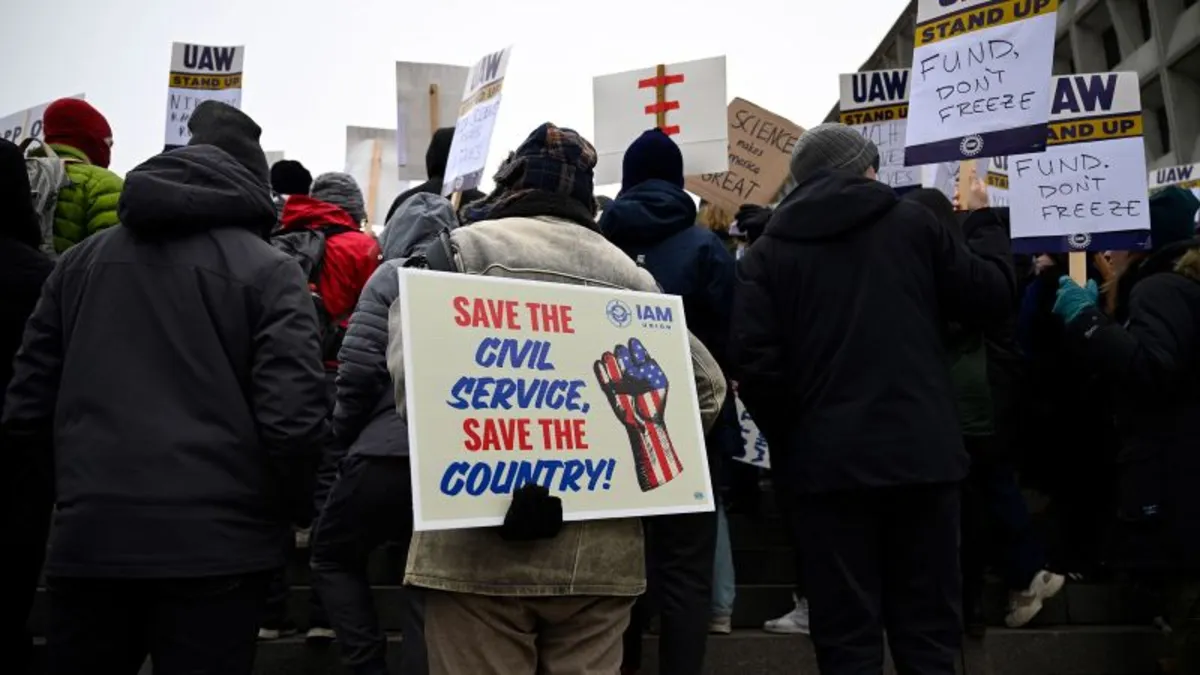
A second federal judge has ruled that thousands of probationary employees who were laid off en masse by the Trump administration must be temporarily reinstated to their positions. This significant decision comes from Senior Judge James Bredar, an Obama appointee, and affects 18 federal agencies. The temporary restraining order issued on Thursday will remain in effect for two weeks as a legal challenge against the terminations moves forward, spearheaded by Democratic state attorneys general.
This ruling follows a related decision made earlier on the same day by a federal judge in California. Judge William Alsup reversed the mass layoffs of probationary workers, who typically have been employed for less than a year, but his ruling applied to a smaller group of agencies. Bredar’s legal rationale for reinstating the employees diverges from that of Judge Alsup, illustrating the complexities of federal employment law.
In addition to reinstating employees from the Departments of Veterans Affairs, Agriculture, Energy, Interior, and Treasury—as Judge Alsup had ordered—Bredar's decision extends to several other agencies. These include the Department of Health and Human Services, the Environmental Protection Agency, and the US Agency for International Development.
The case, filed in Baltimore’s federal court, centers on claims made by the attorneys general that the Trump administration violated a six-day notice requirement for so-called reductions in force (RIFs) and neglected other procedural steps necessary for such mass terminations. In response, the administration argued that no such notice was required for these layoffs, which were conducted swiftly during the early days of the administration. They cited federal law that allows the termination of probationary employees under specific circumstances without prior notice.
Judge Bredar dismissed the administration’s arguments, stating that the terminations did not qualify for the category that would exempt them from the notice requirement. In his 56-page opinion, he noted, “The sheer number of employees that were terminated in a matter of days belies any argument that these terminations were due to the employees’ individual unsatisfactory performance or conduct.” He further characterized the administration’s justification as “bordering on the frivolous.”
The implications of Bredar’s ruling are significant. He indicated that the administration would be permitted to lay off employees en masse if it follows the correct RIF procedures, including providing advance notice. However, the ruling also clarifies that the administration retains the right to dismiss individual employees without adhering to RIF rules if those terminations are based on legitimate performance issues.
In the California case, Judge Alsup echoed similar sentiments, criticizing the Trump administration’s rationale for the layoffs. He issued a preliminary injunction based on the belief that the Office of Personnel Management had unlawfully directed agencies to conduct these layoffs earlier in the year. Alsup’s ruling is regarded as one of the most significant to date in evaluating the administration’s authority to rapidly decrease the federal workforce, a key initiative of the Elon Musk-led Department of Government Efficiency.
The Trump administration's focus on probationary workers stems from the fact that they possess fewer job protections and can be terminated more easily compared to permanent employees. Typically, federal probationary employees serve in their positions for one year, although some roles may involve two-year probationary periods. These employees may be new to the federal workforce or may have recently been promoted or relocated to different agencies.
This article has been updated with additional details, and contributions were made by CNN’s Devan Cole.